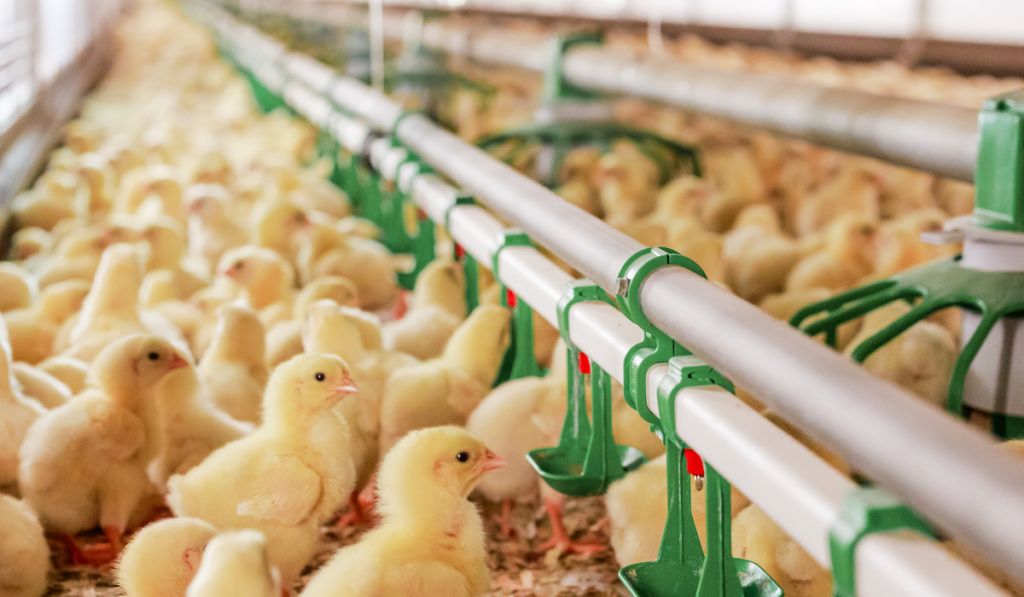Livestock and poultry farming has been a crucial component of human civilization for thousands of years, providing a steady source of food, clothing and other essential resources. As the global population continues to rise, the demand for animal protein products has surged, leading to advancements in agricultural practices to ensure efficiency, sustainability and responsible resource management.
Sustainable Livestock & Poultry Drinking Water: A Growing Need
In the current landscape of sustainable livestock and poultry farming, the burgeoning expansion of operations has propelled water resource management into the forefront of critical challenges. The imperative for providing livestock with an unswerving and uncontaminated water supply, vital for their optimal health and productivity, underscores the intricate interplay between agriculture, environmental sustainability and public health. Amidst this complexity, the runoff emanating from both livestock and poultry waste and expansive feedlots emerges as a consequential contributor to water pollution, thereby engendering multifaceted environmental and health risks.
1. Rising Expansion, Rising Challenges
The burgeoning growth of livestock operations amplifies the importance of effective water resource management. An unswerving and uncontaminated water supply is crucial for optimal livestock and poultry health and productivity.
2. The Culprit: Runoff From Livestock Waste & Feedlots
Amidst the complexities, runoff from livestock and poultry waste and expansive feedlots emerges as a significant contributor to water pollution. This runoff poses multifaceted environmental and health risks, necessitating a strategic response.
3. Embracing Change: The Paradigm Shift
Forward-thinking farmers are at the forefront of change, recognizing the need for a paradigm shift in water management. The adoption of livestock water treatment technologies becomes a key strategy in navigating the intricate nexus of water quality, agricultural productivity and environmental stewardship.
4. Mitigating Risks: Strengthening Livestock Resilience
The integration of livestock drinking water treatment technologies plays a crucial role in mitigating the risks associated with waterborne pollutants infiltrating the agricultural ecosystem. This proactive approach fortifies the resilience of livestock and poultry operations against potential crises.
5. Beyond Livestock: Ecological Considerations
Enhanced water quality not only benefits livestock and poultry but also ripples into broader ecological considerations. Aligning agricultural practices with environmental conservation and stewardship becomes imperative for sustainable farming.
6. Convergence of Farming & Technology
The intersection of livestock farming and drinking water treatment technologies signifies a pivotal juncture. This convergence exemplifies the coalescence of food production, environmental sustainability and technological innovation.
By embracing these shifts and integrating innovative solutions, you play a crucial role in shaping the future of sustainable livestock farming, where your livestock biosecurity and welfare harmonize with environmental stewardship and technological progress.
2 Sustainable Tools For Poultry & Livestock Drinking Water
1. Livestock AOP Water Treatment
Advanced Oxidation Processes (AOP) stands as a technological marvel, employing the generation of highly reactive hydroxyl radicals to orchestrate the systematic breakdown and elimination of a vast array of both organic and inorganic contaminants pervasive in water sources. The efficacy of this methodology transcends positioning itself as a transformative force in the landscape of livestock farming. AOP’s ability to offer a sustainable and highly efficient mechanism for water treatment constitutes a watershed moment where technology converges with the imperatives of environmental stewardship.
AOP’s Sustainable Path to Profit
Livestock AOP water treatment systems are geared toward the eradication of pathogens, bacteria and a spectrum of other deleterious substances that might compromise the quality of water supplied to livestock. This strategic deployment ensures that the lifeblood of livestock and poultry remains untainted, fostering an environment conducive to optimal health and productivity. The precision with which AOP dismantles contaminants underscores its role as a custodian of water quality, elevating it to a standard that transcends conventional treatment methods. The ability to neutralize such a diverse array of contaminants is not merely a technological feat but a strategic imperative in safeguarding the health of animals and, by extension, ensuring the integrity of the food chain.
Livestock and poultry farming is experiencing a significant shift towards sustainability and responsible practices, with the adoption of AOP water technology playing a crucial role. This technology represents a departure from conventional methods and reflects a commitment to ethical farming in the 21st century. The integration of AOP livestock water treatment into your operations signifies a symbiotic relationship between technological innovation and the imperative to sustain both the agricultural enterprise and the delicate ecological balance it depends on.
2. Media Filtration
In the intricate realm of water treatment within animal farming, Advanced Oxidation Processes (AOP) assume a central role in the pursuit of water purification. AOP technology, with its highly reactive hydroxyl radicals, orchestrates the breakdown and elimination of a diverse array of contaminants in water. However, the narrative of comprehensive water treatment is incomplete without acknowledging the equally indispensable role played by media filters. These unassuming yet vital components act as key components within the water treatment system, designed with the explicit purpose of physically trapping and removing suspended particles from water. By serving as a barrier against impurities, media filters play a crucial role in preventing contaminants from reaching animal drinking troughs and safeguarding other water sources dispersed across the farm.
The functionality of media filters hinges on their design, which facilitates the effective removal of sediments, organic matter, and other particulate pollutants. This proactive filtration mechanism is not only a technological sophistication but also a fundamental defense strategy against potential health hazards to livestock and the broader farm ecosystem. Nevertheless, the efficacy of media filters is contingent upon regular maintenance, a critical aspect often overlooked. Routine inspections and upkeep are imperative to assess the condition of the filter media and identify signs of clogging or wear that might compromise their filtration efficiency. Regular maintenance practices, such as backwashing, serve as preventive measures to rejuvenate the filter media, ensuring its optimal performance and contributing to the sustained longevity of the entire livestock water treatment system within the farming operation.
How to Maintain Livestock Water Media Filters
Addressing a frequent query in the realm of animal farming, the timing of media filter replacement is a nuanced consideration influenced by various factors intrinsic to the operation. The type of filter media employed, the quality of the water source and the overall contaminant load collectively shape the answer to this crucial question. In essence, the decision to replace media filters is contingent upon a complete evaluation of these variables, reflecting a commitment to maintaining optimal water quality standards within the livestock environment.
In the broader context, a general recommendation underscores the importance of regular inspections and servicing of media filters. This proactive approach serves as a mechanism to continually assess the condition and efficiency of the filters, preemptively identifying any signs of wear, clogging or diminished performance. The dynamic nature of these factors necessitates a responsive and adaptable maintenance strategy, aligning with the specific needs of the livestock operation and the distinct characteristics of the water source.
The potential lifespan of media filters is a subject of consideration and with meticulous care and proper maintenance practices, they can endure for an impressive 7 to 8 years. This longevity is not arbitrary but is contingent upon a consistent regimen of cleaning, backwashing and a strict adherence to manufacturer guidelines. The crux of extending the life of media filters lies in the cultivation of proactive and preventive maintenance practices. Establishing a routine maintenance schedule becomes paramount, enabling farmers to synchronize their efforts with the unique demands of their livestock operation, thereby fortifying the longevity and efficiency of the media filters integral to their water treatment system.
How a Media Filter’s Lifespan Impacts Contaminant Load
The intricate relationship between the contaminant load in water and the longevity of media filters underscores a critical facet of livestock and poultry farming water management. The direct influence of high levels of suspended solids, organic matter and various contaminants manifests in the accelerated clogging of filter media, precipitating a gradual reduction in their effectiveness over time. In regions where water quality is compromised or in operations characterized by a substantial contaminant load, the imperative for more frequent inspections and maintenance becomes paramount. This adaptive approach recognizes the dynamic nature of the challenges posed by diverse water sources and underscores the need for responsive strategies in safeguarding the integrity of the water treatment system.
To navigate this complex terrain, farmers are advised to engage in regular water quality tests as a proactive measure to assess the prevailing levels of contaminants. These tests serve as diagnostic tools, offering insights into the specific composition of impurities present in the water. Armed with this information, farmers can then tailor their maintenance schedules accordingly, acknowledging the unique challenges posed by the local water source. Understanding these complexities, farmers can adopt AOP technology by allowing the implementation of precision strategies aimed at maximizing the efficiency and lifespan of media filters. By aligning maintenance efforts with the specific contaminant profile of the water, farmers can optimize the performance of their water treatment system, such as AOP elevating the overall sustainability and resilience of their livestock farming operation.
How Service For Media Filter Longevity
Servicing and maintaining media filters go hand in hand with ensuring their longevity. Regular inspections form the cornerstone of this proactive approach, necessitating a meticulous examination of the filter media for any indications of clogging, wear, or damage. This thorough scrutiny serves as an early detection system, enabling farmers to identify potential issues before they compromise the overall efficiency of the water treatment system.
A common and essential maintenance practice in the arsenal of filter care is backwashing. This procedure involves the strategic reversal of water flow through the filter, effectively dislodging and flushing out accumulated particles. Beyond mere maintenance, backwashing serves as a revitalizing process, breathing new life into the filter media and reinstating its optimal filtration capacity. This rejuvenation process is integral to sustaining the longevity and performance standards of media filters.
Farmers are further advised to remain cognizant of the manufacturer’s recommendations about the type of filter media utilized. Adhering to these guidelines is crucial, as they provide valuable insights into the specific maintenance requirements and replacement timelines for the filter media in use. Some media filters may necessitate only periodic cleaning, while others may require more intensive maintenance, including the replacement of the filter media, to uphold stringent performance standards. By aligning their maintenance practices with manufacturer guidelines, farmers can navigate the nuanced landscape of media filter care, ensuring not only the prolonged lifespan of these crucial components but also the sustained efficiency of their livestock farming water treatment systems.
The Future of Sustainable Livestock Drinking Water
The intricate dance between water technology and media filter maintenance in sustainable livestock farming encapsulates a transformative journey toward responsible agricultural practices. The pivotal role of AOP livestock and poultry water treatment symbolizes a conscientious pivot towards safeguarding the health and well-being of livestock and poultry while proactively mitigating the environmental consequences associated with conventional agricultural practices. AOP’s capacity to target a diverse array of contaminants and its holistic approach elevates the standards of water quality, aligning agricultural endeavors with the imperatives of environmental conservation and stewardship.
Equally crucial are the unsung heroes, media filters, serving as sentinels in livestock farming water treatment systems. Their pivotal role in preventing contaminants from reaching vital water sources underscores their significance, pairing it with an AOP water treatment not only mitigates challenges but keeps the systems working efficiently. The delicate interplay between water technology and filter maintenance, informed by the understanding of contaminant loads and local water characteristics, resonates as a beacon guiding farmers toward the sustainable and resilient future of livestock farming. In this holistic approach, technology converges with stewardship, creating a harmonious synergy that not only meets the demands of a rising global population but does so with an unwavering commitment to efficiency, sustainability and responsible resource management.
Discover how livestock drinking water AOP treatment can enhance your farm’s sustainability. Learn more today »





